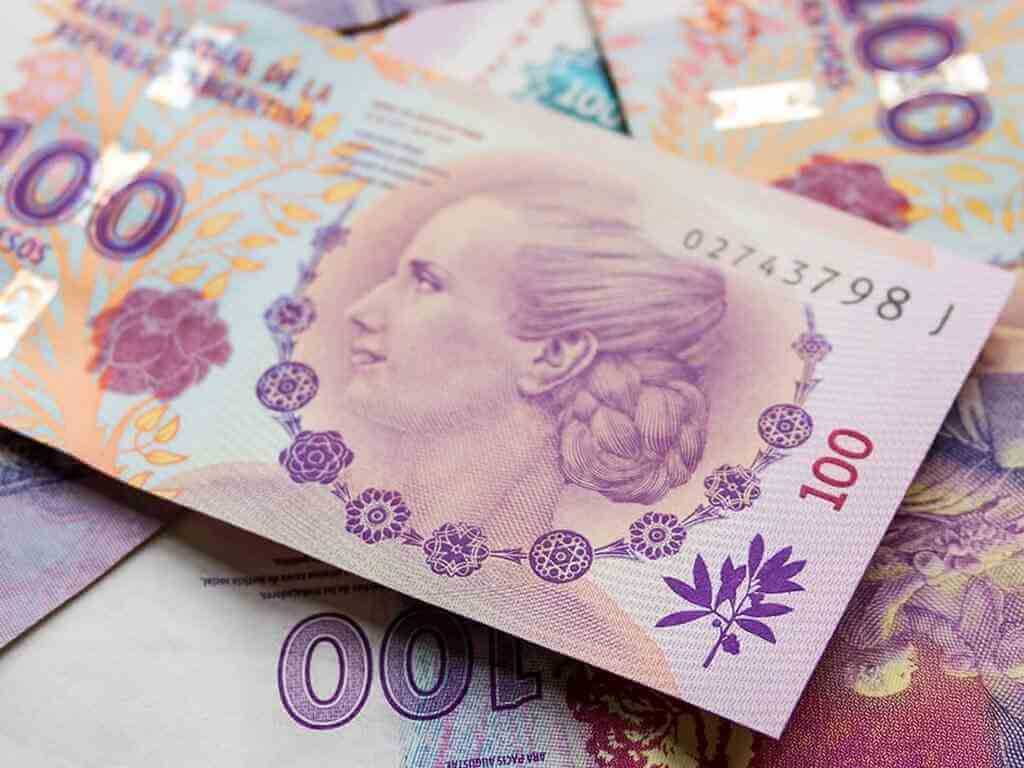RIO DE JANEIRO, BRAZIL – Argentina is experiencing money issues. Most of them are serious and widespread, such as the fiscal deficit and the loss of access to foreign credit. But there is a very specific one: there is a shortage of paper currency.

The Central Bank continues to issue currency 24 hours a day in order to finance the economic shutdown resulting from the pandemic, but the two banknote printing facilities have been forced to reduce production because part of their workforce fell ill with Covid-19. Some bankers, like Jorge Brito, president of Banco Macro, urgently demand higher-value bills.
The largest banknote in circulation in Argentina is the 1,000 peso bill (US$14; R$75). And it is not easy to find. To cover last weekend’s demand, with the independence celebration and an extended holiday, the Central Bank had to distribute 185 billion pesos in 100 peso bills to banks, so that a modest withdrawal at an ATM meant carrying home a bulky bundle.
Since the start of the year, the Central Bank has issued over 1.35 trillion pesos (R$ 100 billion) to cover the fiscal deficit – revenue has dropped 20 percent since March – and to finance subsidies like Emergency Family Income, which will be paid for the third time in the next few days. It benefits approximately nine million people, and each round costs more than 90 billion pesos (R$ 6.7 billion).
This implies not only an inflationary risk, but also an enormous physical effort. In June, the two Central Bank printing facilities placed in circulation 50 million 1000-peso banknotes, two million 500-peso banknotes, 12 million 200-peso banknotes, and 540 million 100-peso banknotes.
The production works 24 hours a day, with eight-hour shifts. But the Covid-19 complicated matters. In the printing facility that until 2012 belonged to the company Ciccone Calcográfica (the nationalization was unable to cover up a corruption case that led to the conviction of former vice-president Amado Boudou), 31 employees contracted the disease and had to stop production on two occasions, the second for four days. In the Retiro facility there were only four people infected. The Mint claims the situation has returned to normal but maintains reserve teams to cover potential new sick leaves.
The need for cash is endless. The next payment of subsidies again worries banks, which are in charge of its distribution. Jorge Brito, of Banco Macro, and others in charge of credit institutions, consider it urgent to launch a new 5,000 peso banknote at least to mitigate the shortage of paper money. Brito says that Argentines have “doubled the amount of cash” they handle and complains that low denominations make it difficult to carry and store money.
The Central Bank and President Alberto Fernández have been considering the launch of a 5,000 peso banknote for months, but they prefer to defer it for the time being so as not to arouse inflationary feelings. Since the start of the pandemic and the resulting economic shutdown, inflation in June stood at 2.3 percent (2019 closed at 53.8 percent annually) and is expected to reach December 2020 at under 40 percent if the gigantic money supply in recent months does not lead to price distortions.
Source: El País

